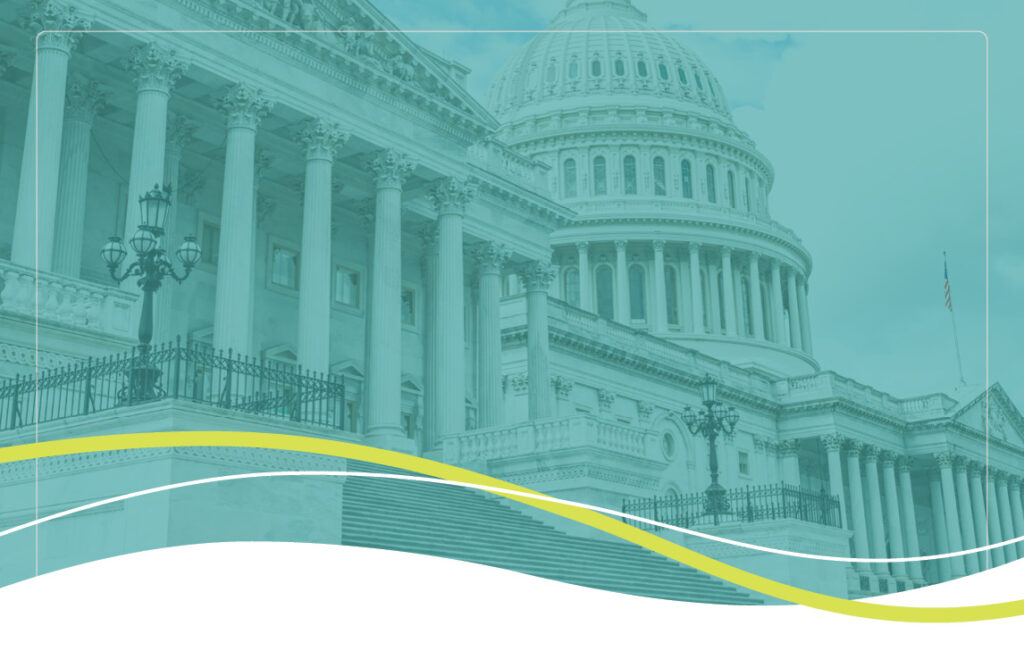CMS Guidance for States on the Termination of the COVID-19 Public Health Emergency Declaration
Background
The COVID-19 Public Health Emergency (PHE) declaration, issued by the Department of Health and Human Services (HHS) under the authority of the Public Health Service Act, has been in effect since January 31, 2020. The 2020 Families First Coronavirus Response Act (FFCRA) requires states to keep Medicaid beneficiaries enrolled in coverage for the duration of the PHE as a condition of receiving a 6.2% Federal Medical Assistance Percentage (FMAP) increase (enhanced FMAP). Since the onset of the PHE declaration, Medicaid and CHIP enrollment increased by 9.9 million people (13.9%) to a record high of 80 million enrollees. As the PHE begins to wind down, states must plan the redetermination process for Medicaid enrollees that have retained coverage due to PHE protections.
On March 3, the Centers for Medicare and Medicaid Services (CMS) released State Health Official Letter #22-001 (SHO) with new guidance for states on providing continuous Medicaid coverage and prioritizing Medicaid eligibility and enrollment workload upon the termination of the PHE. Key takeaways from the new guidance are outlined below.
Key Takeaways
Timing Considerations
The current PHE declaration extension is scheduled to expire on April 16. Because HHS has indicated it will provide 60 days’ advanced notice of the PHE termination date, the agency will likely extend the PHE declaration beyond April 2022. States are required to develop and maintain an operational plan for the PHE unwinding, but they are not required to submit their plans to CMS for approval. The probable PHE extension gives states additional time to prepare for successful unwinding periods using the guidance outlined below.
CMS provides states flexibility on the timeline for initiating PHE unwinding activities, as shown on the infographic on page 32 of the SHO. This timeline flexibility comes with potential policy trade-offs. States may choose to extend coverage a little longer by initiating the unwinding starting in the month following the end of the PHE but will potentially lose the enhanced FMAP before they have started removing individuals from the rolls depending on when in the quarter the PHE ends. States may also initiate the unwinding activities up to two months prior to the end of the PHE (while waiting until the month after the end of the PHE to take final action to preserve enhanced FMAP), but this option will mean fewer Medicaid coverage months for those who will lose coverage during redetermination, leading to higher levels of uninsured individuals. Lastly, states can split the difference and initiate redetermination activities one month prior to the end of the PHE.
Administrative Considerations
Regardless of timing, unwinding the PHE will require states to invest in administrative resources, which may have downstream impacts such as delaying work on other initiatives. Stakeholders and other parties seeking an audience with state Medicaid agencies should be mindful that bandwidth may be more limited than usual in the 12–14 months following the end of the PHE.
States have considerable flexibility in designing their redetermination workflows. States may adopt nearly any risk-based approach to prioritizing pending eligibility and enrollment actions they choose during the unwinding period that complies with the CMS guidance. This flexibility potentially gives states the opportunity to permanently redesign more efficient eligibility and enrollment priorities based on the unique populations or disease burdens present in each state’s Medicaid population.
The guidance encourages states to streamline their renewal processes by limiting the need for redundant data collection and enhancing electronic data collection and sharing. Though CMS recommends that some of these flexibilities be granted through temporary section 1902(e)(14)(A) waivers, the introduction of novel, automated renewal workflows present opportunities for states to build permanent efficiency improvements into their eligibility data collection and sharing processes. Well-documented successes in streamlining enrollment under a temporary waiver authority opens opportunities for states to apply for more-permanent enrollment data streamlining solutions.
Financial Considerations
Enhanced FMAP associated with continuous enrollment will terminate at the end of the federal fiscal quarter in the month in which the PHE ends. Loss of enhanced FMAP will put additional strain on state budgets, although some of this additional strain could be balanced by a decrease in Medicaid enrollment.
Even with effective planning, it is likely many beneficiaries will be determined to no longer qualify for Medicaid or CHIP upon redetermination and will lose eligibility. Eligibility loss is unlikely to be evenly distributed across eligibility and income groups, which could lead to changes in case mix for providers and for MCOs. For non-expansion states, decreased Medicaid enrollment could lead to increased levels of uninsured individuals, potentially increasing financial burden on safety-net and other hospitals that provide uncompensated and charity care. For MCOs, a decline in Medicaid rolls will lead to decreased per-member per-month capitation payments and has the potential to change the overall case mix of MCO enrollment.
Summary of CMS Guidance
- States must continue to develop their unwinding operational plans. States are neither required to use the plan toolkits developed by CMS nor submit their operational plans to CMS for approval, but they must make their plans available to CMS upon request.
- To satisfy the continuous enrollment condition necessary to claim the temporary enhanced FMAP for the entire quarter in which the PHE termination month falls, states must maintain continuous enrollment of Medicaid beneficiaries through the last day of the month in which the PHE ends. Termination of a beneficiary’s enrollment can be effective no earlier than the first day of the month following the month in which the PHE ends, with limited exceptions on an individual basis. States that elect to end the continuous enrollment condition and complete eligibility renewals and redeterminations prior to the first day of the month in which the PHE ends will no longer qualify for enhanced FMAP.
- States have 14 months to complete renewals, post-enrollment verifications, and eligibility redeterminations while remaining compliant with the 12-month unwinding period. The new timeframe addresses states’ timing concerns over the 12-month deadline outlined in prior communications from CMS. It also affords states two additional months to initiate their processes prior to completing actions on these cases, allowing states to preserve the enhanced FMAP during this initiation period. CMS outlines three possible timelines for initiating PHE unwinding activities, each with advantages and disadvantages: starting redetermination two months prior to the end of the PHE, starting redetermination one month prior to the end of the PHE, or starting redetermination the month following the end of the PHE. CMS provides an infographic describing these timelines on page 32 of the SHO.
- States have four months from the end of the month in which the PHE ends to process and complete pending eligibility and enrollment applications. This timeline includes milestones based on eligibility type at the two- and three-month marks.
- States must adopt a risk-based approach to prioritize pending eligibility and enrollment actions related to post-enrollment verifications, changes in circumstances, and renewals during the unwinding period. States may pursue a population-based approach, a time- or age-based approach, a hybrid approach, or a custom, state-developed approach.
- CMS recommends that states should initiate no more than 1/9 of their total caseload of Medicaid renewals per month during the unwinding period. Due to a concern that states processes will result in ineligibility and coverage errors, states must submit reports for renewal distribution and inappropriate coverage loss mitigation to CMS, which will be used to identify states at greatest risk of inappropriate coverage losses.
- States must notify beneficiaries ten days prior to the date of Medicaid coverage termination, suspension, reduction, transfer, or discharge. The notice must include the effective date, basis for the coverage change, and information on beneficiaries’ right to a fair hearing.
- States using an 1135 waiver authority to extend fair hearing request timeframes beyond 90 days during the PHE may either revert to previous fair hearing request timeframes or modify their policy to provide another reasonable period not to exceed 90 days. The 1135 PHE waiver authority grants beneficiaries more than 90 days to request a fair hearing. States can either revert back to pre-PHE fair hearing request timeframes or modify their policies to provide another reasonable timeframe which cannot exceed 90 days.
- States that encounter a dramatic increase in fair hearings that exceed the state’s capacity to adjudicate fair hearing requests within regulatory time limits may be granted authority to provide additional time to take final action. CMS has the authority under section 1902€(e)(14) of the Act to grant states waivers provided that certain beneficiary protections are in place.
- States may modify certain fair hearing and review processes without the need for additional state plan authority to avoid and reduce backlogs of fair hearings. These modifications can include holding fair hearings and reviews by telephone or video or establishing or expanding an informal resolution process to resolve fair hearing requests prior to holding a fair hearing.
- States may use section 1902(e)(14)(A) waiver authority to temporarily implement five specific strategies that facilitate the renewal process by limiting the need for requests for additional information from beneficiaries: ) renew individuals under the age of 65 based on SNAP eligibility without conducting a separate Modified Adjusted Gross Income (MAGI)-based income redetermination, 2.) renew on behalf of households whose attestation of zero-dollar income was verified within the last 12 months, at initial application or previous renewal when no information is received or returned from a financial data source at renewal, 3.) renew beneficiaries for whom no information is returned by the Asset Verification System (AVS) within a reasonable timeframe, 4.) accept updated enrollee contact information from managed care plans without additional confirmation from the beneficiary, and 5.) extend states’ timeframe to take final administrative action on fair hearing requests provided that benefits continue for beneficiaries until final administrative action occurs.
- States may extend coverage to targeted populations by submitting State Plan Amendments (SPAs). Examples of targeted populations include continuous eligibility for children, express-lane eligibility for children, and 12 months of continuous postpartum coverage.
- States may streamline renewals by expanding the number and type of data sources used to attempt ex parte renewal and align MAGI and non-MAGI renewal policies. Updated verification plans for MAGI-based determinations must be submitted to CMS, and states must submit a SPA to change renewal timeframe and frequency for their non-MAGI beneficiaries.
- State agencies should improve communications and outreach to beneficiaries by updating contact information, partnering with health plans, establishing processes to address returned beneficiary mail, and using multiple modalities to reach individuals.
- States must have a coordinated process to send and receive electronic accounts and information to and from the Healthcare Marketplace. The state-based marketplace (SBM) or federal platform would ensure beneficiary determinations of eligibility and enrollment in the appropriate program.
- When transitioning former Medicaid enrollees to a Qualified Health Plan (QHP), states should improve eligibility determination notice language and transmit all available eligibility information and beneficiary contact information to the Healthcare Marketplace. States should work with community-based organizations that comprise the Administration for Community Living (ACL)’s aging and disability networks to ensure consumers access transition assistance.
- States must submit monthly baseline data to CMS for a minimum of 14 months on their progress in completing pending applications and the states’ total caseload of renewals. If data indicate that states are not meeting timelines or have potential compliance issues, states may be expected to report additional data or report information more frequently. States that do not resolve their actions within the timelines specified may be required to submit a corrective action plan outlining strategies and a timeline to come into compliance with the federal requirements.
- CMS will not consider monitoring payment error rate measurement (PERM) and Medicaid eligibility quality control (MEQC) eligibility and enrollment actions delayed due to the PHE so long as the actions are initiated by the end of the 14th month of the 12-month unwinding period. If states have an approved section 1902 (e)(14)(A) waiver and are compliant with the factors outlined in Section V.A., designed to promote continuity of coverage, they will not be considered in violation of Medicaid statutes and regulations for the purposes of PERM and MEQC reviews.
CMS published a communications toolkit alongside its recommendations to provide specific language and messaging agencies can use to notify beneficiaries on upcoming changes to eligibility. CMS also refreshed its slide deck on the role of Managed Care Organizations in reaching Medicaid beneficiaries who may lose coverage as a result of the PHE termination. The agency announced plans to release an updated template to support state development of operational unwinding plans, provide states with data reporting tools to complete outstanding work after the PHE ends, monitor states’ progress related to meeting deadlines and completing enrollment and eligibility actions outlined in the SHO, and provide technical assistance to states.
Should you have any questions, please contact Sellers Dorsey’s Research and Policy Team at info@sellersdorsey.com.
To view this summary as a PDF, please download here.




